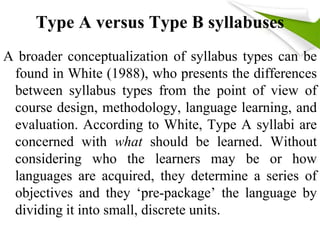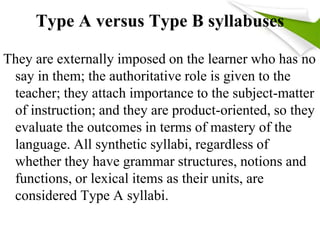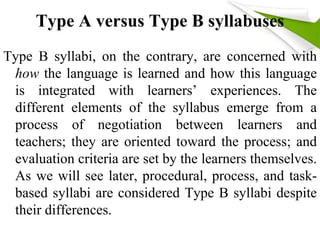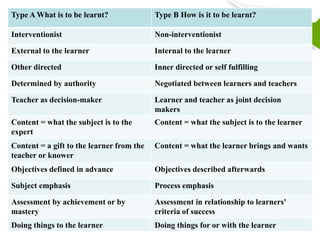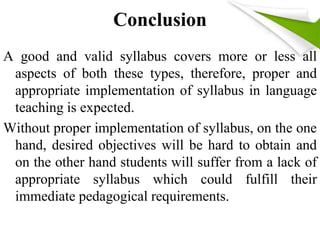This document discusses different types of syllabus design, including process/product, analytic/synthetic, and type A/type B syllabi. It defines a syllabus as the specification of content and ordering of what is to be taught in a language course. Product-oriented syllabi focus on the end results or language parts, while process-oriented emphasize how language is used. Synthetic syllabi separate language into parts, while analytic present whole chunks for analysis. Type A syllabi pre-determine objectives, while type B emerge through negotiation and focus on the learning process. A good syllabus incorporates elements of different types to meet learners' needs and achieve desired objectives.
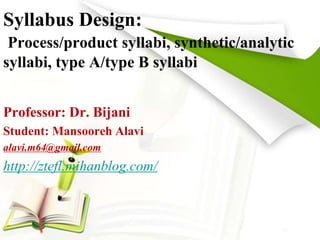
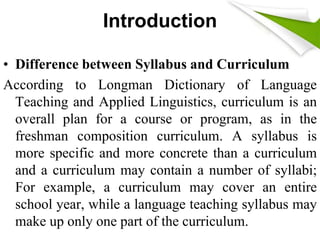

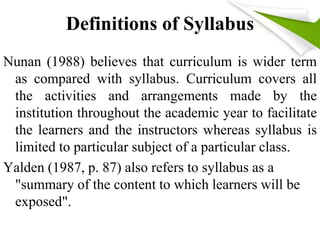
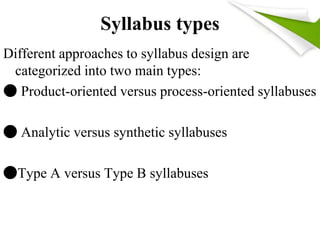

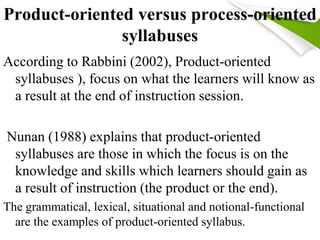
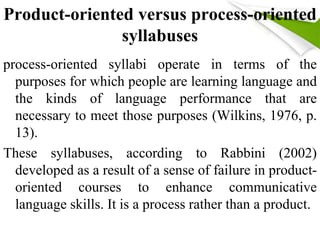
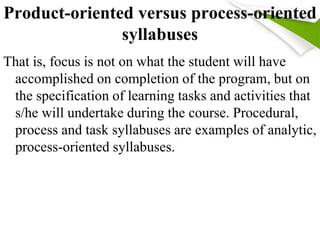

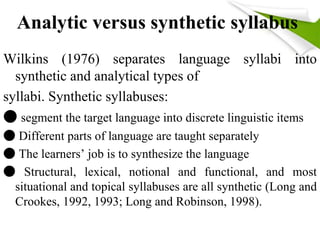
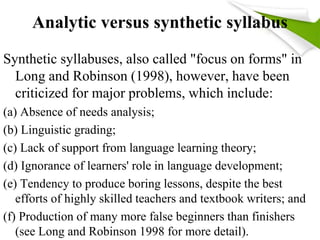
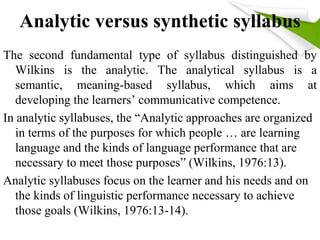
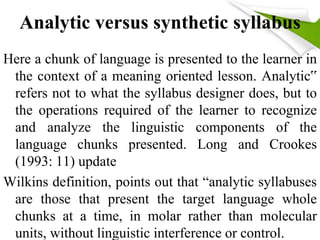

![Analytic syllabuses Synthetic syllabuses
Tasked-based Structural
Procedural Situational
Notional-functional
[According to Wilkins
(1976)]
Notional-functional
[(According to Long &
Crooks (1992))
Content-based
Negotiated
Analytic/Synthetic-oriented syllabi](https://image.slidesharecdn.com/me1-141206023523-conversion-gate02/85/Me1-16-320.jpg)
